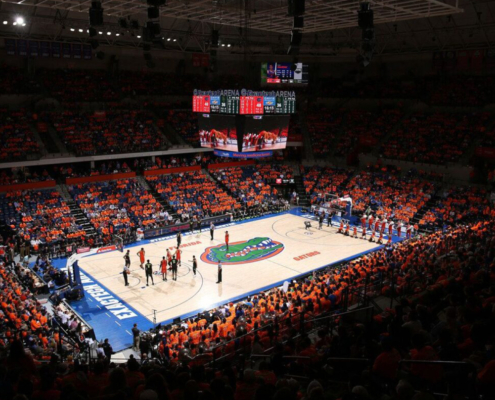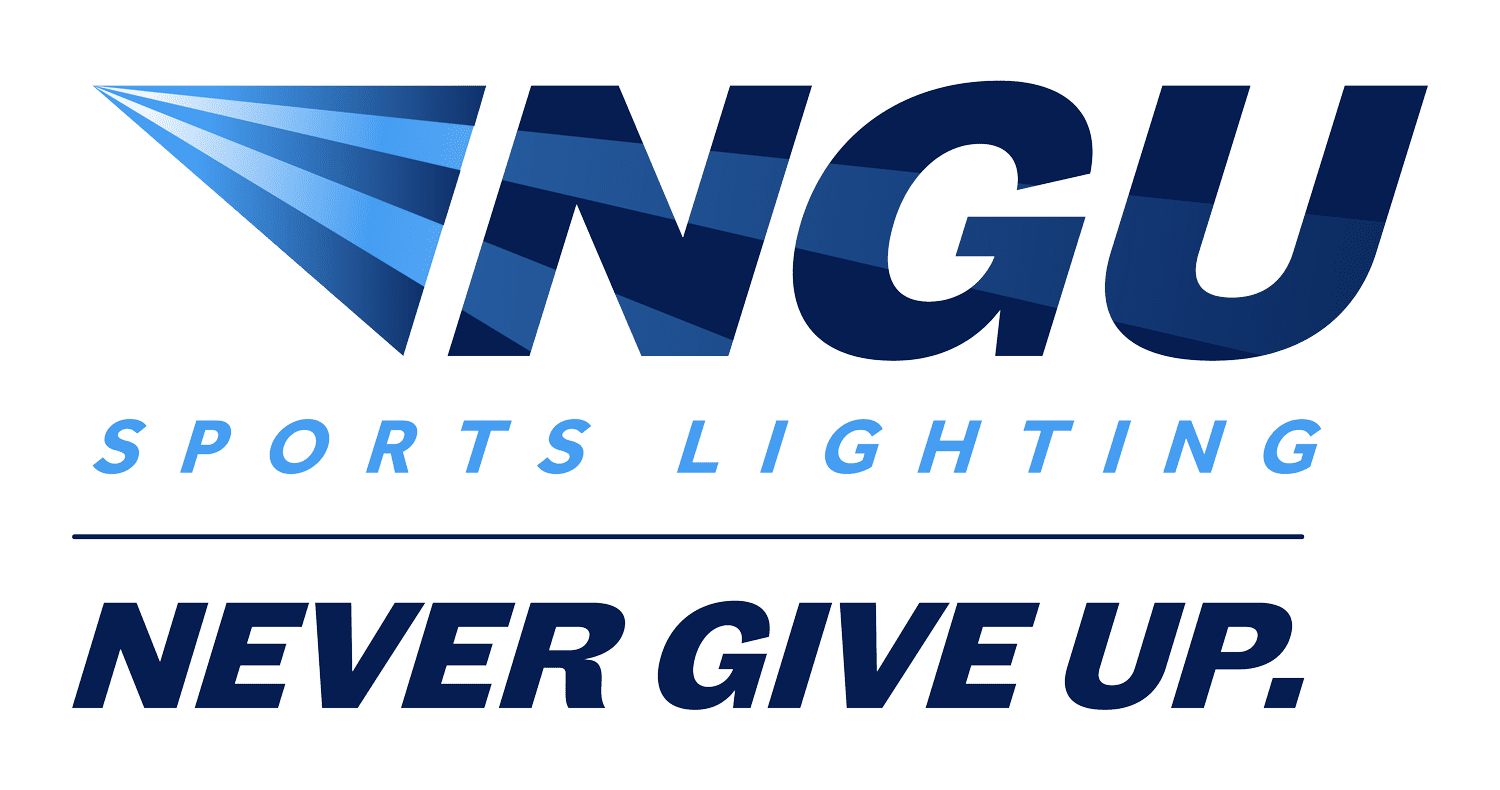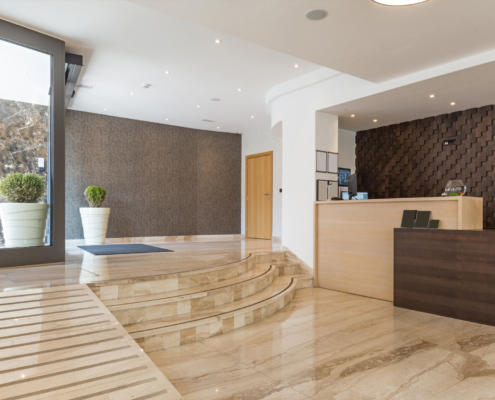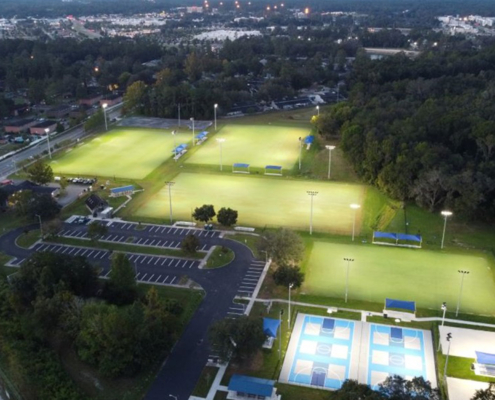 https://ngusportslighting.com/wp-content/uploads/2022/05/Homepage-Banner-2-Florida-Gators.jpg
1250
2000
AbstraktMarketing
/wp-content/uploads/2022/08/NGU-Full-Logo.png
AbstraktMarketing2024-06-18 14:33:252025-11-24 14:25:29University LED Arena Light Fixtures Guide: Types, Cost & Funding
https://ngusportslighting.com/wp-content/uploads/2022/05/Homepage-Banner-2-Florida-Gators.jpg
1250
2000
AbstraktMarketing
/wp-content/uploads/2022/08/NGU-Full-Logo.png
AbstraktMarketing2024-06-18 14:33:252025-11-24 14:25:29University LED Arena Light Fixtures Guide: Types, Cost & FundingHow Modern Sports Lighting Standards Can Make the Magic Come Alive
There’s nothing quite like being under the bright lights at a sporting event. From Friday night high school games to Monday Night Football, there has always been a magical relationship between sports and lighting.
In this article, we’ll walk through the history of sports lighting and how modern LED lighting solutions can add magic to the overall experience.
A History of Lighting Applications That Made the Magic Come Alive
Although major sporting events didn’t officially have night games with advanced lighting systems until the 1920s and 30s, some estimate that baseball games were played with artificial lighting dating back to the late 1800s.
The concept of night baseball was first introduced 130 years ago on September 2, 1880, in Hull, Massachusetts. It took place shortly after Thomas Edison had perfected the electric light bulb, and two department store teams participated. Another night game was played on June 2, 1883, in Fort Wayne, Indiana, where a visiting team from Quincy, Illinois, emerged victorious against the local team. Throughout the 19th century, several more night games were organized in minor leagues.
American Football’s First Night Game
The first night game with lights in American football was a historic moment in the sport’s history, forever changing the way the game is played and experienced. On November 6, 1929, at the iconic West Side Park, the Chicago Cardinals hosted the Providence Steam Roller under the brilliance of artificial illumination. The stadium was bathed in a radiant glow as thousands of spectators watched the fierce competition.
The electrifying atmosphere intensified the drama and excitement of the game, captivating fans in a way never seen before. This groundbreaking event paved the way for the widespread adoption of night games in American football, transforming it into a spectacle that could be enjoyed long after the sun had set.
MLB’s First Night Time Illumination
The first night game in Major League Baseball (MLB) marked a historic milestone in the sport’s long and illustrious history. On May 24, 1935, the Cincinnati Reds and the Philadelphia Phillies took to the field under the mesmerizing floodlights at Cincinnati’s Crosley Field. As darkness enveloped the ballpark, anticipation filled the air. The innovative concept of playing baseball after sunset had finally become a reality. The dazzling lights illuminated the diamond, casting dramatic shadows and creating a spectacle unlike anything before in the sport.
Considerations for Sports Lighting Standards
When it comes to installing LED sports lighting systems, there are certain standards you should keep in mind to ensure your facility gets the best light quality for athletes and spectators alike.
High Color Rendering
Systems should have a Color Rendering Index (CRI) of at least 80. This means the colors seen under the light will look clear and vibrant. A higher CRI will also improve overall visibility on the playing surface, making it easier to track balls and players during gameplay.
Flicker-Free Illumination
Flickering lighting can distract athletes and spectators, causing fatigue and even headaches in some cases. LED systems provide a consistent light output without any flickering or strobing effects. This is important for creating an enjoyable experience for everyone at your facility, from athletes to coaches to spectators.
A Balanced Vertical and Horizontal Illuminance Ratio
To make sure your facility maintains an even light distribution across its playing surfaces, you’ll want a lighting system with a balanced vertical/horizontal illuminance ratio of 1:1 or 2:1. This means that the amount of light projected on vertical surfaces should be equal to or slightly less than the amount projected on horizontal surfaces.
Glare Reduction
To prevent glare, you need to look for LED systems that feature reduction technologies like specially designed lenses that disperse light evenly throughout the area instead of concentrating it in one spot. This will create a more comfortable environment for all involved.
Shadow Prevention
If you’re concerned about shadowing, you may want to invest in LED systems that feature adjustable optics so you can customize beam angles from 10° to 150° depending on your needs. Doing so will reduce shadows and create clearer visuals during game time so everyone can enjoy the viewing experience without missing any action due to dark spots on their screens.
With ever-changing sports lighting standards, it’s important to catch up with the latest technology. Check out this article that highlights the efficiency of LED lighting solutions.
LED Lighting Applications to Brighten Your Venue
LED lighting has revolutionized the way we illuminate sports venues. With their remarkable energy efficiency, long lifespan, and superior performance, LED lights have become the preferred choice for upgrading sports lighting standards in facilities worldwide.
Stadium Floodlighting
Floodlighting is one of the most critical aspects of any sports venue. Traditional metal halide or high-pressure sodium lights have been the norm, but they have several limitations. LED floodlights provide superior lighting quality, visibility, and color rendering. Their instant on/off capabilities allow for dynamic effects during events, and their directional lighting properties minimize spillage and glare for players and spectators.
Scoreboard and Video Display
LED technology has transformed how we experience live sports. LED scoreboards and video displays have become an integral part of modern sports venues. These high-resolution screens provide crisp, vibrant visuals that engage the crowd and enhance the overall spectator experience. LED screens offer excellent brightness, wide viewing angles, and the ability to display dynamic content such as live video feeds, instant replays, and interactive graphics.
Partner With NGU for the Best LED Lighting Solutions for Any Venue
For a worthwhile return on your investment, consider LED lighting. NGU has been at the forefront of stadium illumination for over 10 years, ensuring that any sized venue meets sports lighting standards. Get in touch with our team today and take the first step towards success.




